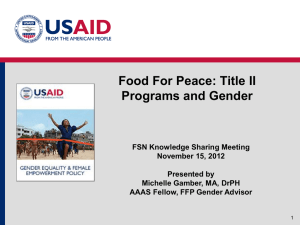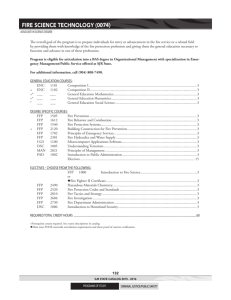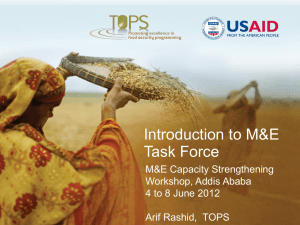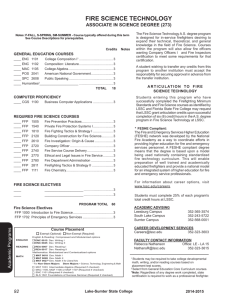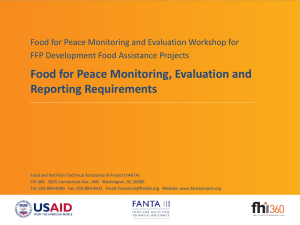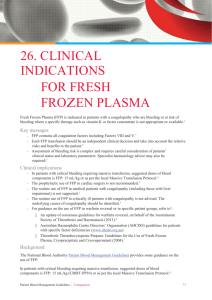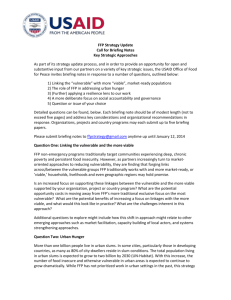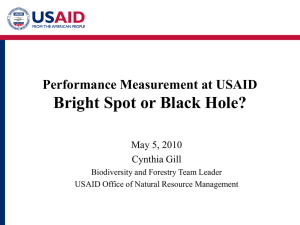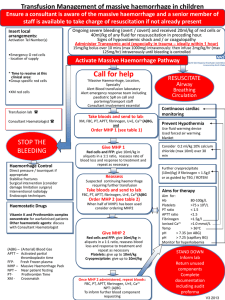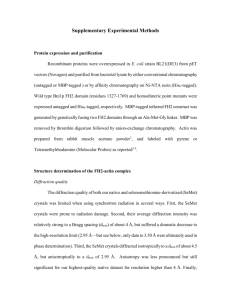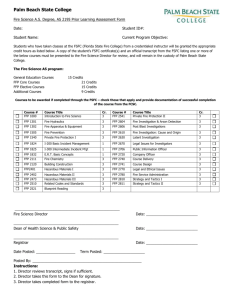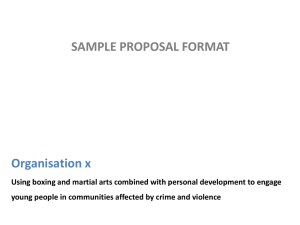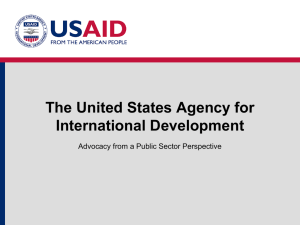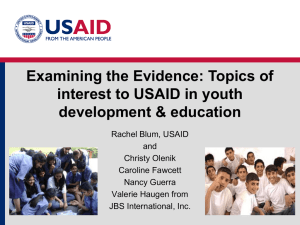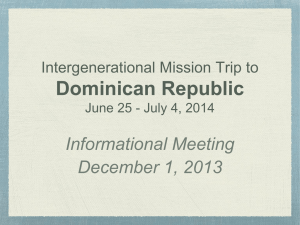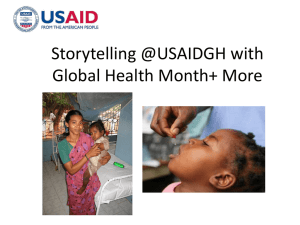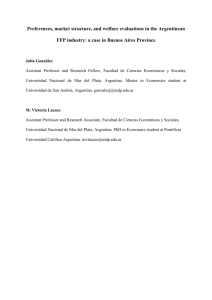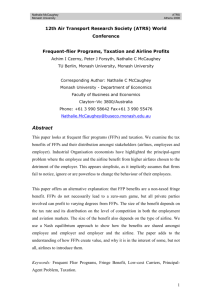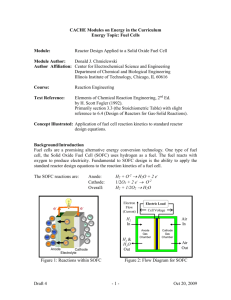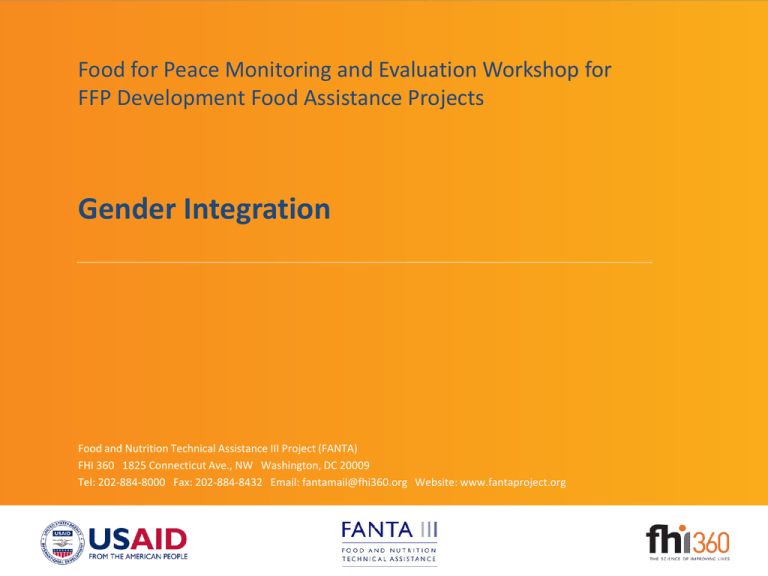
Food for Peace Monitoring and Evaluation Workshop for
FFP Development Food Assistance Projects
Gender Integration
Food and Nutrition Technical Assistance III Project (FANTA)
FHI 360 1825 Connecticut Ave., NW Washington, DC 20009
Tel: 202-884-8000 Fax: 202-884-8432 Email: fantamail@fhi360.org Website: www.fantaproject.org
Session Objectives
By the end of the session participants will have become
familiar with:
• FFP gender M&E requirements
• FFP gender indicators for baseline and final
evaluation
Gender Integration
Session Outline
•
•
•
•
•
USAID policy environment for gender
FFP gender M&E requirements
Gender integration as a cross-cutting theme
FFP gender integration framework
FFP gender indicators
Gender Integration
July 2013
USAID ADS 205 released
Oct 2014
FFP adopts
gender
indicators
March 2012
USAID Gender Equality and Female
Empowerment Policy launched
Sept 2012
FFP hires
Gender Advisor
March 2011
Report on Gender Integration in FFP
published as an FFP occasional paper
and first steps to gender integration start
Oct/Nov 2009
Gender integration in Title II
becomes mandatory
May-Sept 2009
Revised Title II proposal
guidelines to integrate gender
Gender Integration
FFP M&E Gender Requirements
Gender must be integrated into each project:
• As a cross-cutting theme
• 8 required gender indicators for baseline/final
evaluation (BL/FE) surveys
• 1 required gender related ‘F’ indicator (annual
monitoring)
• Sex disaggregation for FFP BL/FE and annual
monitoring indicators (where applicable)
Gender Integration
FFP Gender Requirements, Non-M&E
• Required gender expert
• Gender analysis completed by the end of first year
• Program design must ensure equitable participation
of program activities by men, women, boys, and girls
continued…
Gender Integration
FFP Gender Requirements, Non-M&E
Program design must consider how activities would
affect:
• Status of women and men (time, health)
• Access to and control over resources and benefits for
boys, girls, men, and women
• Gender-based violence (GBV)
Gender Integration
Gender Integration as a Cross-Cutting
Theme
ELEMENT
Agriculture and livelihood
Maternal and child health
and nutrition (MCHN)
FFP STRATEGIC
OBJECTIVES
Improved agricultural
sector growth
Improved nutritional
status, especially of
women and children
Example: vulnerable
households net income
increased
Example: chronic
malnutrition among
vulnerable rural
populations in targeted
micro-watershed reduced
PROJECT
PURPOSE
Gender Integration
FFP Gender Integration Framework
Decision
Making
Communication
Resources/
Information
Membership/
Participation
Gender Integration
Access
Control
FFP Gender Integration Framework
Agriculture and Livelihood
Decision
Making
Communication
Resources/
Information
Membership/
Participation
Gender Integration
63.a. Percentage of men/women in union and
earning cash who make decisions alone
about the use of self-earned cash
63.b. Percentage of men/women in union and
earning cash who make decisions jointly
with spouse/partner about the use of selfearned cash
62. Percentage of people in union and earning
cash who report talking about use of selfearned cash with spouse/partner
61. Percentage of people in union who earned
cash in the past 12 months
64. Percentage of people in union and earning
cash who are members of a group
FFP Gender Integration Framework
MCHN
Decision
Making
Communication
Resources/
Information
Membership/
Participation
67.a. Percentage of men/women in union with children under
two who make MCHN decisions alone
67.b. Percentage of men/women in union with children under
two who make MCHN decisions jointly with
spouse/partner
66. Percentage of people in union with children under two who
report talking with spouse/partner about MCHN
65. Percentage of people in union with children under two who have
knowledge of MCHN practices
68. Percentage of people in union with children under two who are
members of a group
Gender Integration
Resources
McNairn, Rosemarie M. and Sethuraman, Kavita. 2011. Gender Integration in USAID Bureau for
Democracy, Conflict, and Humanitarian Assistance Office of Food for Peace Operations:
Occasional Paper #7. Washington, DC: FANTA.
http://transition.usaid.gov/our_work/humanitarian_assistance/ffp/gendemainstreaming.pdf
USAID. 2012. Gender Equality and Female Empowerment Policy. USAID Policy.
http://transition.usaid.gov/our_work/policy_planning_and_learning/documents/GenderEquality
Policy.pdf
USAID. 2013. ADS Chapter 205. Integrating Gender Equality and Female Empowerment in USAID’s
Program Cycle.
http://www.usaid.gov/ads/policy/200/205
Demographic and Health Surveys:
http://dhsprogram.com/publications/publication-dhsqm-dhs-questionnaires-and-manuals.cfm
Gender Integration
This presentation is made possible by the generous support of the
American people through the support of the Office of Health,
Infectious Diseases and Nutrition, Bureau for Global Health, and
Office of Food for Peace, Bureau for Democracy, Conflict and
Humanitarian Assistance, United States Agency for International
Development (USAID) under terms of Cooperative Agreement No.
AID-OAA-A-12-00005, through the Food and Nutrition Technical
Assistance III Project (FANTA), managed by FHI 360. The contents are
the responsibility of FHI 360 and do not necessarily reflect the views
of USAID or the United States Government.
Gender Integration

